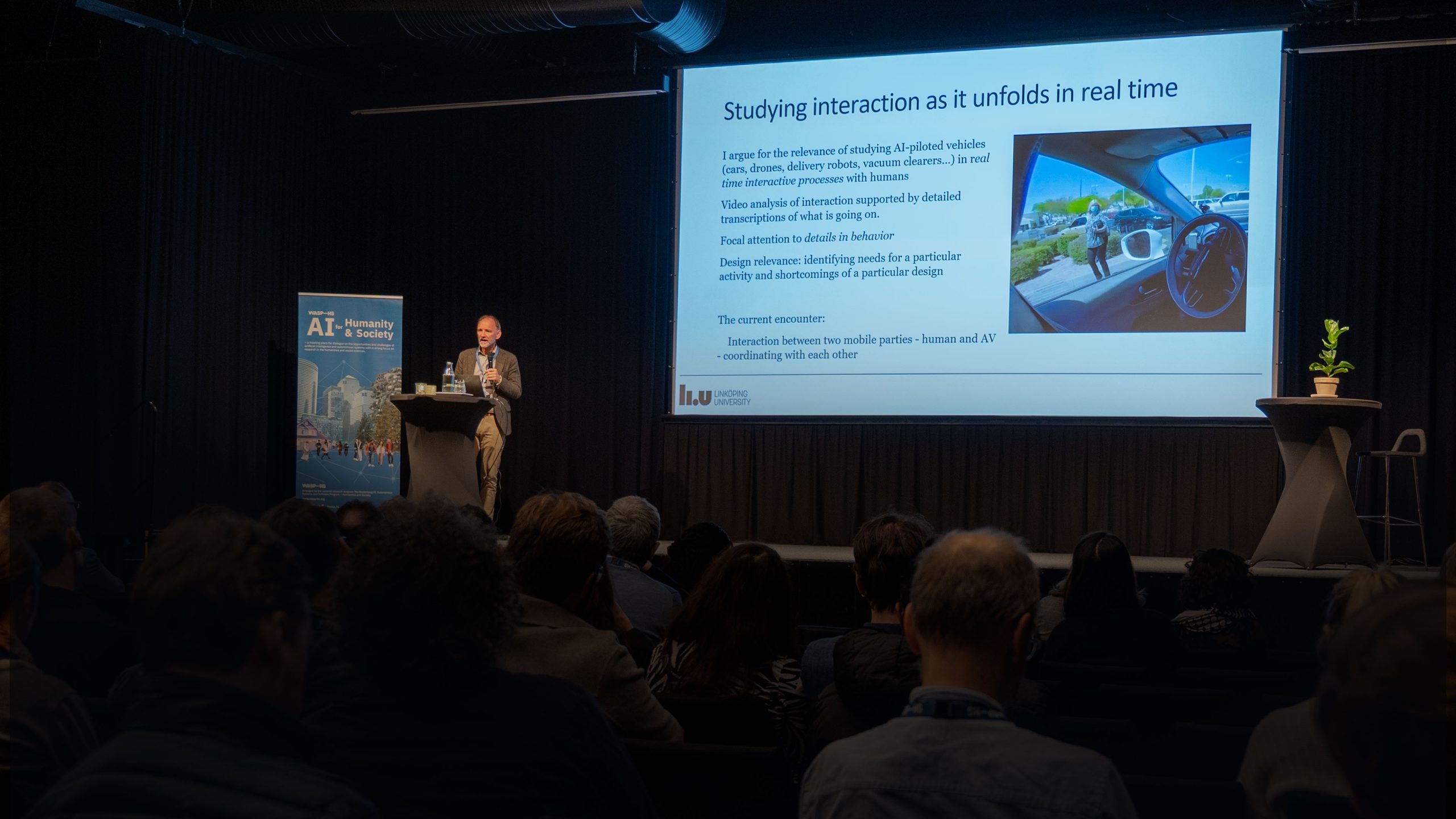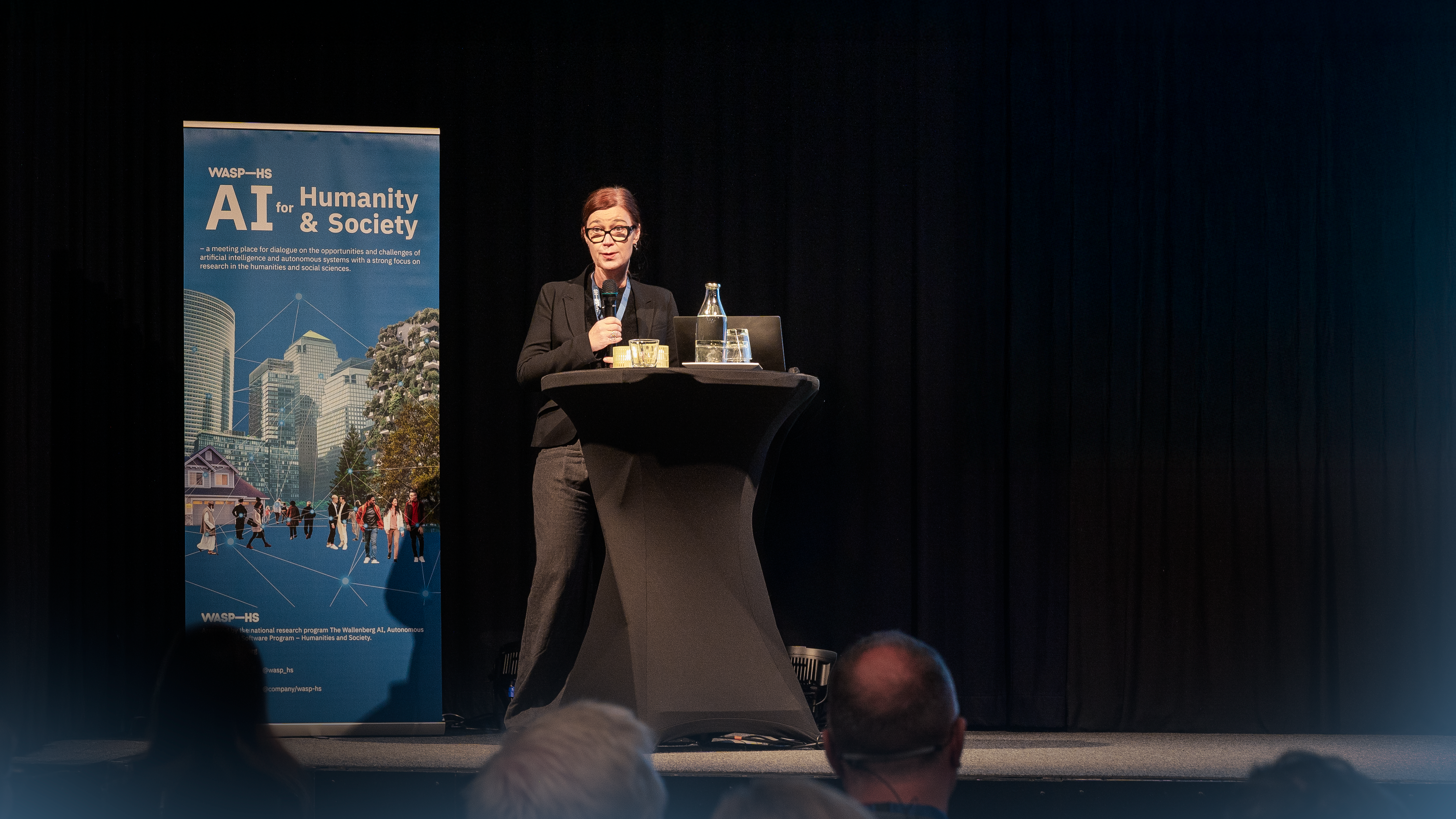How does self-driving cars affect the relationship between pedestrian and passenger? At last year’s WASP-HS AI for Humanity and Society conference: Creating Shared AI Futures, I was one of four speakers invited to give a lightning talk about my research.
Miscommunication Between Passenger and Pedestrian
My research group and I study interaction with self-driving cars and other autonomous vehicles in real time. In particular, how they affect human behavior and what humans expect from them. To get a better understanding of my talk at the conference, I would encourage you to watch the following video.
This video clip, taken from J.J. Ricks’ video “Waymo Self Driving Taxi Goes Rogue: Blocks Traffic, Evades Capture JRicks Rides with Waymo #54“ shows the inside view of a self-driving car as it is driving on a parking lot in Phoenix Arizona. At one point, the self-driving car “sees”, or registers, a pedestrian walking out of their parked car. In a situation like this, a human driver is likely to register the pedestrian but is aware, and assumes, that there will not be any consequences. The self-driving car, on the other hand, seems to “perceive” the pedestrian as something to react to, and slams on the brakes. In response, the pedestrian changes her walking trajectory as she believes that the sudden braking of the car was done for her. In other words, she crosses the path which the car was planning to drive. Meanwhile, the passenger inside the self-driving car gives off a sound of fear as they can only observe how the self-driving car is managing this interactional encounter. The passenger has no control of the self-driving car.
In this short video clip, we thus begin to see how people—the pedestrian and the passenger— respond differently to the self-driving car’s actions. The pedestrian shows trust in the car’s braking, believing it to be a deliberate action allowing her to walk in front of it. Meanwhile, the passenger does not seem convinced that this encounter will end well. With this encounter as an example, I argue that detailed knowledge on how humans in real life situations obviously make sense of autonomous vehicle (AV) behavior is a valuable resource for future design efforts on AVs.
The Future of “Cars”
My lightning talk resulted in a roundtable discussion with a group of conference participants. One issue raised during the discussion was how we can know what other passengers or pedestrians are thinking and how this can be applied to self-driving cars. This led us to discuss the availability of – and expectations surrounding – human and AV communicative resources, and what behaviors mean in their situated context of use.
We also discussed how AV’s actions are permanently traceable as they run due to and store data to work. What implications does that have?
We also discussed whether or not the future really belongs to ”cars” or if it isn’t time that we abandoned the idea or individuals transporting themselves in ”iron cages” altogether. What would the future look like without them? All very interesting topics indeed!
More About Self-Driving Cars and Autonomous Vehicles
To read more about Mathias Broth’s research project and the project members, see AI in Motion: Studying the Social World of Autonomous Vehicles.





